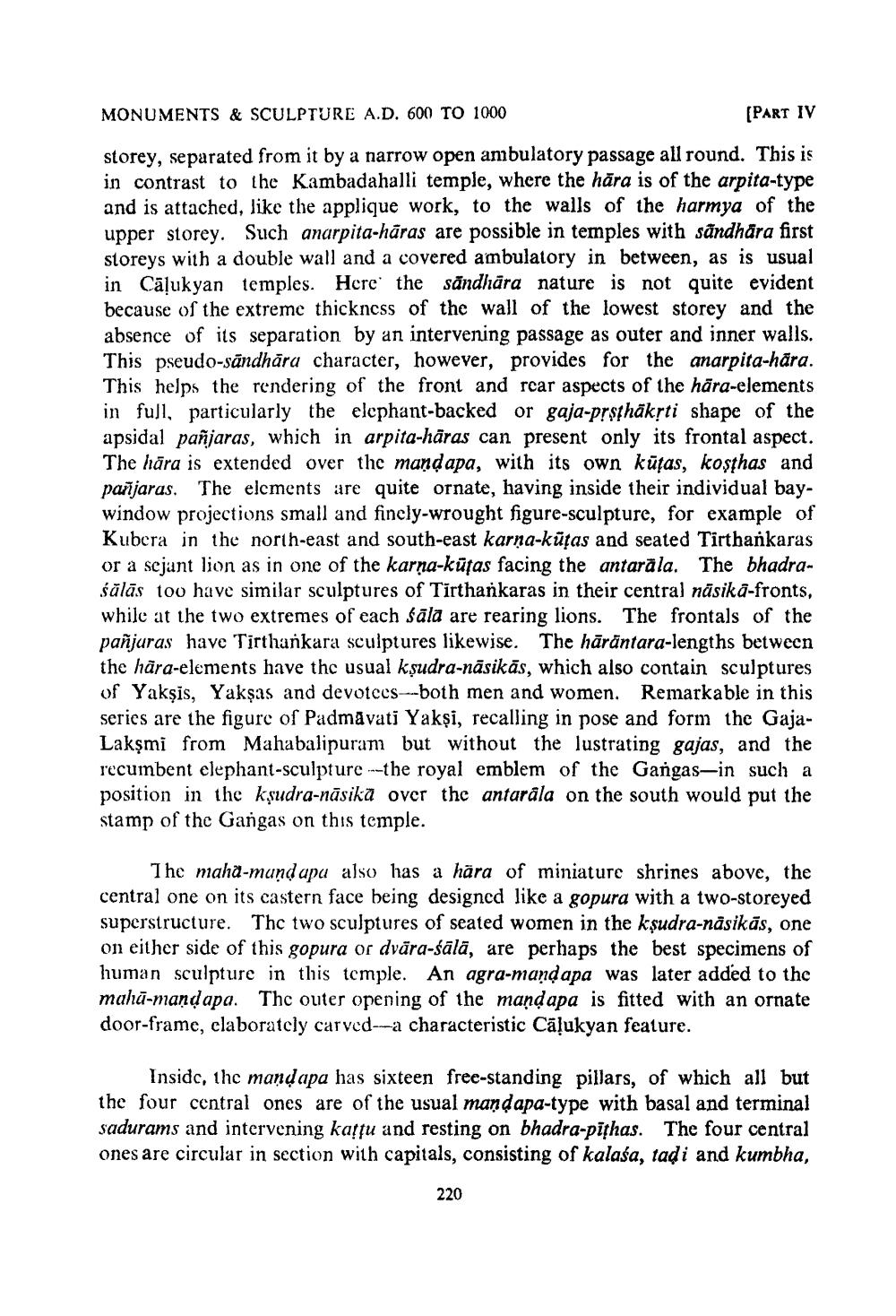________________
MONUMENTS & SCULPTURE A.D. 600 TO 1000
[PART IV storey, separated from it by a narrow open ambulatory passage all round. This is in contrast to the Kambadahalli temple, where the hara is of the arpita-type and is attached, like the applique work, to the walls of the harmya of the upper storey. Such anarpita-hāras are possible in temples with sändhāra first storeys with a double wall and a covered ambulatory in between, as is usual in Calukyan temples. Here the sandhara nature is not quite evident because of the extreme thickness of the wall of the lowest storey and the absence of its separation by an intervening passage as outer and inner walls. This pseudo-sandhāra character, however, provides for the anarpita-hāra. This helps the rendering of the front and rear aspects of the hara-elements in full, particularly the elephant-backed or gaja-pṛṣṭhākṛti shape of the apsidal panjaras, which in arpita-hāras can present only its frontal aspect. The hāra is extended over the mandapa, with its own kutas, kosthas and panjaras. The elements are quite ornate, having inside their individual baywindow projections small and finely-wrought figure-sculpture, for example of Kubera in the north-east and south-east karṇa-kūtas and seated Tirthankaras or a sejant lion as in one of the karṇa-kūtas facing the antarala. The bhadraśālās too have similar sculptures of Tirthankaras in their central näsikä-fronts, while at the two extremes of each śāla are rearing lions. The frontals of the pañjuras have Tirthankara sculptures likewise. The häräntara-lengths between the hara-elements have the usual kṣudra-nāsikās, which also contain sculptures of Yaksis, Yaksas and devotees--both men and women. Remarkable in this series are the figure of Padmavati Yakşi, recalling in pose and form the GajaLaksmi from Mahabalipuram but without the lustrating gajas, and the recumbent elephant-sculpture --the royal emblem of the Gangas-in such a position in the kṣudra-nāsika over the antarala on the south would put the stamp of the Gangas on this temple.
The maha-mand apa also has a hära of miniature shrines above, the central one on its castern face being designed like a gopura with a two-storeyed superstructure. The two sculptures of seated women in the kṣudra-nāsikās, one on either side of this gopura or dvara-śālā, are perhaps the best specimens of human sculpture in this temple. An agra-mandapa was later added to the maha-maṇḍapa. The outer opening of the mandapa is fitted with an ornate door-frame, elaborately carved--a characteristic Calukyan feature.
Inside, the mandapa has sixteen free-standing pillars, of which all but the four central ones are of the usual mandapa-type with basal and terminal sadurams and intervening kaṭṭu and resting on bhadra-pithas. The four central ones are circular in section with capitals, consisting of kalasa, tadi and kumbha,
220




